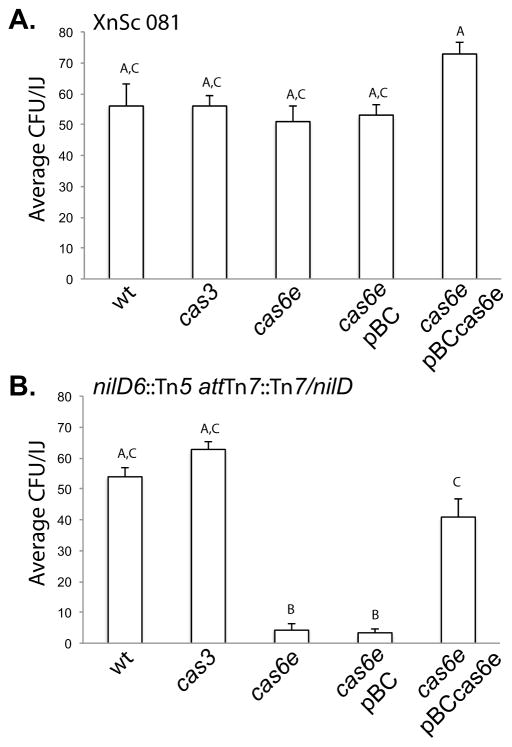Figure 5.
cas6e is necessary for colonization in the nilD6::Tn5 attTn7::Tn7/nilD background.Colonization ability was measured for (A) XnSc 081 and (B) nilD6::Tn5 attTn7::Tn7/nilD (the nilD mutant with wild type nilD expressed in trans at the attTn7 site). Each strain carried wild type cas genes (wt) or cas3 and cas6e mutations. In each background, the colonization phenotypes of the cas6e mutant carrying the control vector pBC or wild type cas6e (pBCcas6e) was also assessed. Each strain was co-cultivated with axenic S. carpocapsae nematodes and colony forming units (CFU) within the resulting progeny infective juveniles (IJ) was measured by sonication and dilution plating. The average CFU of strain/IJ ± standard error (n ≥ 5) is shown. In this experiment the uncomplemented nilD6::Tn5 strain colonized at 0.22 ± 0.11 CFU/IJ Different letters indicate significant differences in colonization levels between bacterial strains: p<0.0001 One-way ANOVA with Tukey’s post-test.

